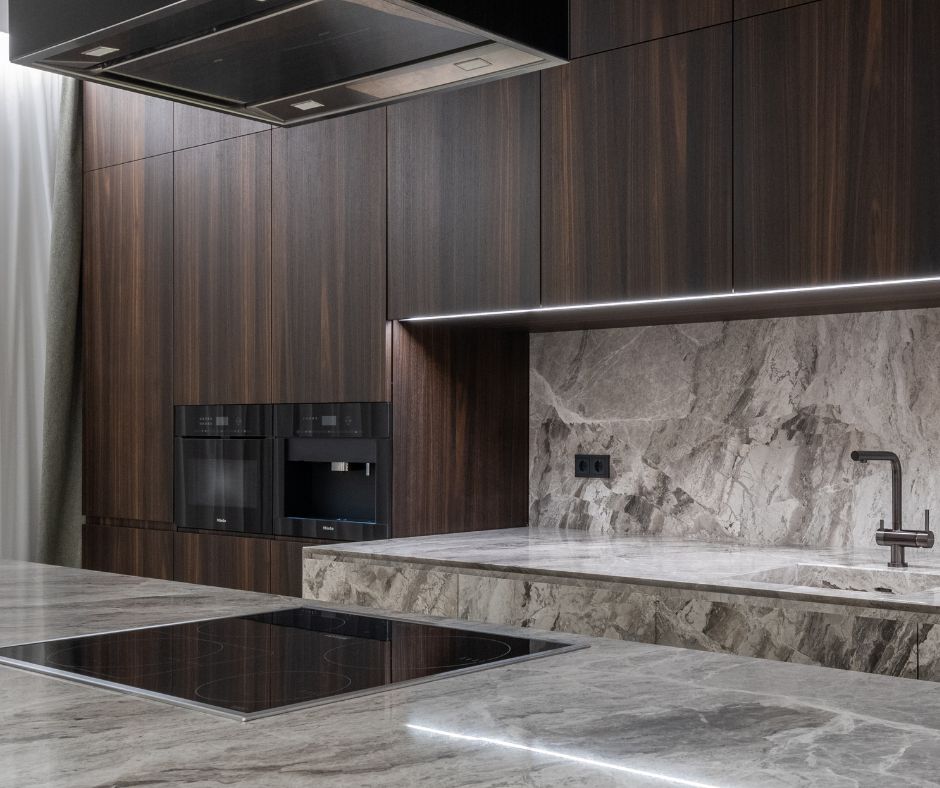Innovative kitchens are the breeding ground for exciting new culinary traditions. Although induction cooking technology might appear to be a cutting-edge innovation, its roots can be traced back to the early 20th century. The first demonstrations in the 1930s awed spectators with the astonishing capability to boil water using magnetic energy without any discernible heat source. However, it has been in the past few decades, driven by significant advancements in technology, efficiency, and design, that induction cooktops have firmly established themselves as indispensable components of modern kitchens.
Today, a growing number of home cooks and culinary aficionados are embracing induction cooking for its captivating blend of sleek aesthetics, exceptional precision, and unmatched energy efficiency. This revolutionary cooking method not only accelerates meal preparation but also transforms the culinary arts, seamlessly merging heat management science with creative cooking in every meal prepared on its elegant, polished surface. The ideal induction cooktop can rival the speed of a microwave in delivering delicious dishes for the family!
Enhancing Flavor and Nutritional Value Through Precision Cooking Techniques
Unlike traditional gas or electric ranges, induction cooktops directly heat cookware using electromagnetic energy. This revolutionary method eliminates wasted heat, prevents burnt edges, and allows for exceptional control over both low and high cooking temperatures. With the ability to manage heat so precisely, your ingredients retain more of their natural moisture, flavor, and nutritional integrity. Whether you’re searing proteins to perfection, gently simmering sauces, or swiftly blanching vegetables, induction cooking simplifies achieving perfect results, helping to avoid overcooked dishes and nutrient loss.
Sleek and Stylish Induction Cooktops: Optimize Your Kitchen Space While Reducing Stress
In kitchens where every square inch is precious, induction cooktops excel not only in functionality but also in visual appeal. Their flat, smooth surfaces seamlessly blend into your countertop, creating a minimalist aesthetic that enhances the available space for food preparation, plating, or even casual dining experiences.
Unlike traditional gas hobs, which come with cumbersome grates and protruding burners, induction cooktops sit flush within the countertop. While glass-ceramic stovetops may provide a sleeker look, they tend to remain dangerously hot long after the cooking process is complete.
In contrast, induction surfaces cool down quickly once the cookware is removed. The heat is produced through the magnetic interaction between the cooktop and the cookware, rather than by the cooktop itself, meaning the glass surface retains significantly less heat. This characteristic not only makes cleaning safer and easier but also creates a more secure cooking environment, particularly beneficial for families with children or pets who may be curious about kitchen counters.
The result? A cooler kitchen with cleaner lines and greater flexibility—perfect for modern culinary enthusiasts who value both aesthetics and functionality.

Comprehensive Guide to Choosing the Best Cookware for Induction Cooking
Transitioning to induction cooking may come with the bittersweet realization that you might need to part ways with some cherished old pots and pans. Since induction technology relies on magnetic energy for efficient heat generation, not all cookware will be suitable for this advanced method.
For cookware to operate effectively on an induction cooktop, it must be composed of ferrous (magnetic) metals, including cast iron, carbon steel, or magnetic-grade stainless steel. A straightforward fridge magnet test can quickly determine compatibility: simply place a magnet on the bottom of the pan. If it adheres firmly, you’re in the clear.
When selecting new cookware, choose pans with a heavy, flat base. This design ensures optimal contact with the cooktop, facilitating even heat distribution which is critical for achieving perfect browning, tender roasts, and crispy edges. Additionally, high-quality induction cookware is designed to resist warping over time, ensuring consistent cooking performance for every meal.
While letting go of old favorites may be difficult, consider it an upgrade to a more efficient culinary experience. In exchange, you receive enhanced control, faster cooking times, and meals that feature even richer flavors and textures.
Induction Cookware Quick Reference: Essential Items for Optimal Cooking Success
 Conduct a fridge magnet test—strong adhesion indicates induction compatibility
Conduct a fridge magnet test—strong adhesion indicates induction compatibility Choose flat-bottom pans for optimal contact and heat distribution
Choose flat-bottom pans for optimal contact and heat distribution Select cast iron, carbon steel, or magnetic stainless steel cookware
Select cast iron, carbon steel, or magnetic stainless steel cookware Avoid cookware made solely from copper, aluminum, or glass unless explicitly marked for induction
Avoid cookware made solely from copper, aluminum, or glass unless explicitly marked for induction Look for the induction symbol (resembling a horizontal coil or a series of loops) stamped on the base or packaging
Look for the induction symbol (resembling a horizontal coil or a series of loops) stamped on the base or packaging
Pro Tip: The induction symbol typically resembles a zigzag or spring coil graphic. Identifying it ensures cookware compatibility.
Essential Installation Guidelines for Your Induction Cooktop
Before you embark on your culinary adventure with your new cooktop, there are several installation essentials that must be prioritized:
-
Professional Installation Is Crucial: Induction units often require dedicated electrical circuits and specific clearances. Ensure you engage professionals who understand these requirements.
-
Hire a Certified Electrician: Wiring a high-powered induction cooktop is not a DIY project.
Learn why hiring a qualified electrician is essential. -
Check Your Electrical Setup: Some induction models require substantial power. Before making a purchase, confirm that your wiring meets the cooktop’s specifications.
Proper installation not only ensures optimal performance but also guarantees safety and longevity.
Key Insights on Induction Cooking Benefits
Induction cooking offers more than just speed or safety—it’s inherently intelligent. With the right cookware and a professionally installed system, you can consistently create better-tasting meals, richer textures, and healthier options, meal after meal. In modern kitchens, precision cooking has transitioned from being a luxury to a standard necessity.
Frequently Asked Questions Regarding Induction Cooktops
1. What Makes Induction Cooktops Superior to Gas or Electric Models?
Induction cooktops provide immediate heat control, enhanced energy efficiency, and improved safety features. Since they heat the cookware directly, meals cook faster with less energy waste, while the surfaces remain cooler, reducing the risk of burns.
2. Can I Use My Current Pots and Pans on an Induction Cooktop?
Only if they are magnetic. Cookware made from cast iron or magnetic stainless steel is ideal. You can easily verify compatibility by placing a magnet on the base—if it sticks firmly, it’s suitable for induction cooking.
3. Does Induction Cooking Change the Flavor of Food?
Yes, and in a beneficial way. Because induction cooking allows for precise temperature control, you can sear, sauté, or simmer without overheating, thus preserving the natural flavors, textures, and nutrients far more effectively than with inconsistent gas or electric heat sources.
4. Is Special Wiring Required for an Induction Cooktop?
Most induction cooktops require a dedicated electrical circuit with specific voltage and amperage setups. It’s essential to have a professional electrician evaluate and install your wiring to ensure compliance with safety codes and to guarantee optimal performance.
The post The Secret Ingredient in Modern Kitchens: Induction Cooktops Are Changing the Game appeared first on https://cookinggods.com
The Article Induction Cooktops: The Game-Changer in Modern Kitchens Was Found On https://limitsofstrategy.com

